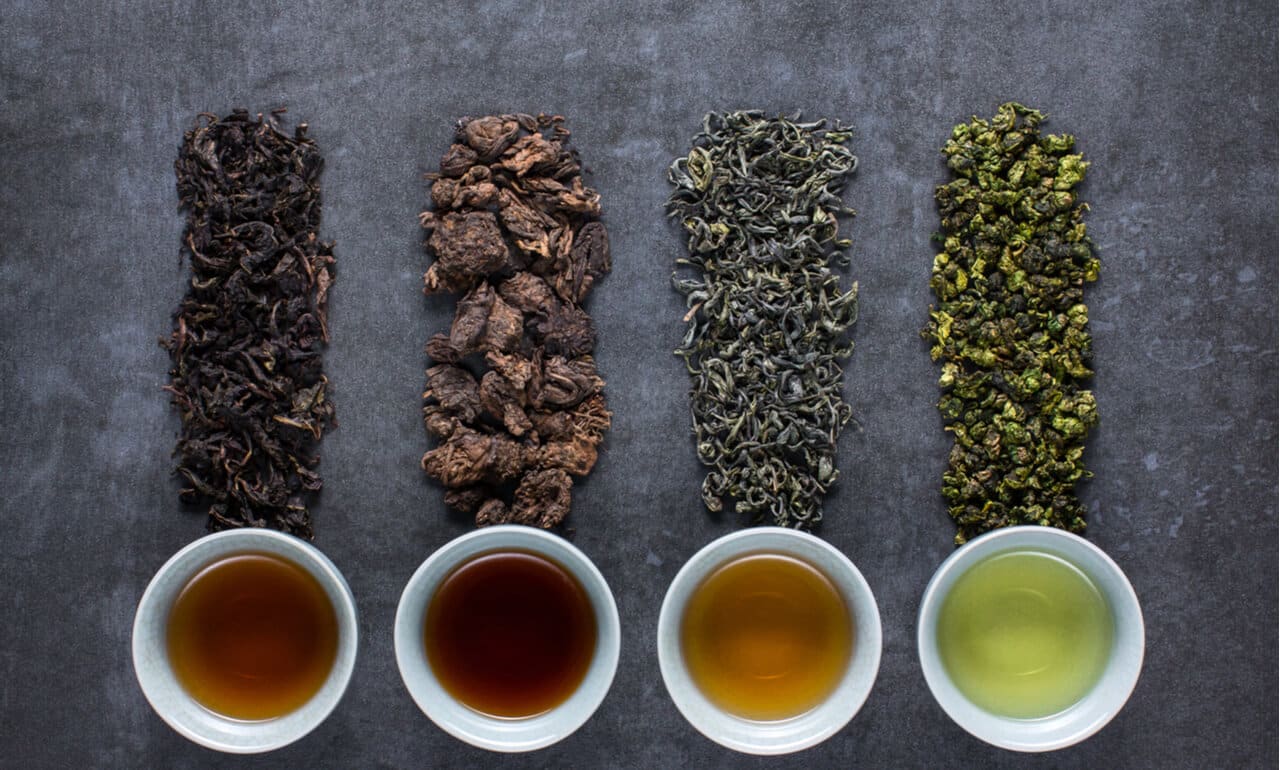There’s a world of tea options out there, from sleepy chamomile to zesty ginger. As long as you stick with natural teas without dangerous additives, it’s hard to go wrong.
Black tea comes primarily from China and India, where they make it in styles suited to pairing with milk and sweetener. It’s the most common tea for blending into classic tea recipes like earl grey or masala chai.
Green Tea
Green tea is made from the leaves of the Camellia sinensis plant. It’s not left to wither or ferment as long as black and oolong teas, and it can be flavored with jasmine flowers, orange peels and tropical, dried fruits. It’s one of the most popular varieties of tea in the US, with 1.7 billion cups consumed each year.
The caffeine and L-theanine in green tea promote calmness and mental processes while stimulating metabolism. This combination gives green tea a unique energy boost that can improve concentration and mood without the jitters of coffee or sugary sodas. Green tea’s polyphenols are known to reduce the risk of cancer and heart disease, according to several population-based studies.
It’s also a good source of manganese, potassium and calcium and contains vitamins B1, C and E. The antioxidants found in green tea may help fight free radicals, which can damage cells and contribute to disease.
A few studies indicate that people who drink at least five cups of green tea per day have a lower risk of lung cancer, according to a study published in March 2020 in the journal “Cancer Prevention Research.” However, more research is needed to determine if these effects are due to the polyphenols in tea or to other factors. In addition, some studies suggest that very high intakes of green tea can interfere with the absorption of certain medications, including beta-blockers and blood thinners, so talk to your doctor before making it part of your daily routine.
Black Tea
All tea is made from the leaves of the same plant—Camellia sinensis—but the differences between the five “true” types of tea—white, green, black, oolong and pu-erh—come down to how they’re processed after harvest. These processing techniques, along with cultivar and growing conditions, give each tea its distinct flavor profile.
Green teas require more careful brewing with slightly cooler water to prevent bitterness, while black teas are more forgiving and can be steeped for longer periods of time, allowing for a range of bold flavors — from malty to fruity to even smoky. For me, the best black teas are those that hail from Taiwan. Cultivars from the Sun Moon Lake region produce tea with a lush, ripe cherry and spice aroma and full body.
Black teas contain caffeine, a stimulant that can help improve alertness and mental focus. While caffeine can have positive effects, over-consumption can also lead to dependency and some individuals may be prone to reactions such as headaches and irritability.
Both black and green teas have been shown to lower blood sugar levels, boost immune system function and encourage weight loss. They can also aid in the regulation of blood pressure and promote heart health. Polyphenols found in both black and green teas may inhibit tumor growth and reduce cancer risk. Additionally, the caffeine in both black and green tea can improve insulin use and increase energy production.
White Tea
White tea is the least processed true tea, and it has recently received much more acclaim in the West. It is made from young tea buds that are picked before they open up, and it contains the highest level of antioxidants of any true teas. These anti-oxidants fight free radicals, which are unstable molecules that can cause damage to cells and tissues. This is thought to be a major factor behind the many health benefits of tea, including preventing tooth decay and promoting healthy skin, hair and energy levels.
The most well known types of white tea are Silver Needle (Bai Hao Yin Zhen), White Peony (Bai Mu Dan) and Long Life Eyebrow (Shou Mei). These teas are distinguished from other varieties by their pale, silvery color, which comes from the abundance of soft downy buds under the leaves. They are also delicate in flavor and very light in body.
Herbal teas, or tisanes, are beverages made from steeping blends of herbs, spices and plants in hot water. Peppermint tea, for example, can aid digestion and soothe an upset stomach; chamomile can help ease anxiety and promote restful sleep; and rooibos is an excellent source of vitamin C, a nutrient essential for many bodily functions, including the production of collagen. Unlike black, green and oolong teas, herbal teas are caffeine-free.
Oolong Tea
The leaves of oolong tea are harvested from the same plant as green and black teas. The difference is the level of oxidation. While green tea is unoxidized, oolong teas are partially oxidized and black tea is fully oxidized. This process gives oolong tea its distinctive wavy appearance and unique flavor profile that falls between the crispness of green tea and the richness of black tea.
Oolong tea can be sipped on its own or paired with other flavors to add complexity and depth. Many oolong teas have floral notes including orchid, jasmine, and lilac as well as minerality reminiscent of wet stone or metal. Other oolong teas, like Baozhong from Taiwan, have toasty and woody notes that are the result of roasting.
A cup of oolong tea helps lower cholesterol levels and improves circulation, lowering your risk for heart disease. It also promotes good bacteria in the digestive tract and can help balance your immune system to protect you from bad bacteria that may cause illness.
Oolong tea is a treasure trove of vitamins and minerals including fluoride, potassium, magnesium, sodium, iron, and niacin. It also contains antioxidants, such as EGCG and theaflavins, that reduce free radical damage. A cup of oolong tea can help you relax and feel good from the inside out.

